Discover history, harbours and heroes
The historic city of Bayeux in Normandy is the perfect location as a base to venture off and explore this beautiful region in northern France.
Normandy is full of heart-wrenching history, particularly among the D-Day Landing Beaches, and has countless charming villages, stunning countryside, and quaint seaside harbours to explore.
We’ve visited Normandy on many occasions, touring through its beautiful landscape, visiting timber-framed villages and digging deeper into its ancient cities. During one visit, we created a perfect 10-day itinerary for a Normandy road trip.
However, this trip was slightly different as we headed off to northwest France for a new experience and embraced Normandy on an EV mini road trip visiting Bayeux, Cabourg and Dives-sur-Mer.

Where is Bayeux?
How to get to Bayeux
- By Car
Departing from the UK to France, there are various options. You can either jump on Le Shuttle and arrive in Calais in 35 minutes or enjoy a leisurely cruise on the open waves with DFDS or P&O. Alternatively, you can head down to the south coast of England and catch Brittany Ferry directly to Normandy.
- By Air
If you’re flying into France, search for your flights in one easy place with Booking.com. This reliable travel search engine will scan for your favoured routes and chosen dates. Pre-book your hire car from Rental Cars, and your adventure begins.
Bayeux, the perfect base in Normandy
Explore its Cathedral, Tapestry and pretty lanes
During the atrocities of the Second World War, on 7th June 1944, Bayeux was the first city of the Battle of Normandy to be liberated by British troops of the 50th (Northumbrian) Infantry Division.
The Bayeux War Cemetery, located southwest of Bayeux, is France's largest British and Commonwealth cemetery from the Second World War.
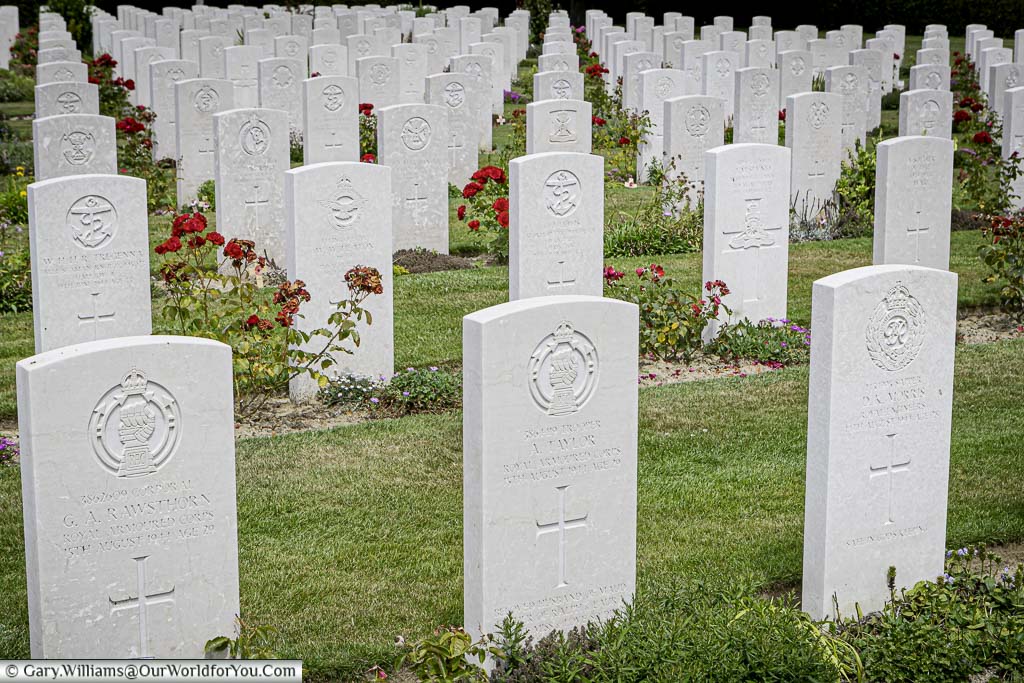
Where to stay in Bayeux
The Hôtel d'Argouges is centrally located, just a short stroll from the historic Old Town and many of Bayeux’s significant sights.
This beautiful 18th century house has many of its original and traditional features, and has a charming, peaceful garden to relax in, after a long day exploring the city. Hôtel d'Argouges has plenty of onsite parking, which is free of charge.
Alternatively, pop your dates in the Booking.com search box and discover further options for all budgets.
Our road trip from Bayeux
Visiting the British Normandy Memorial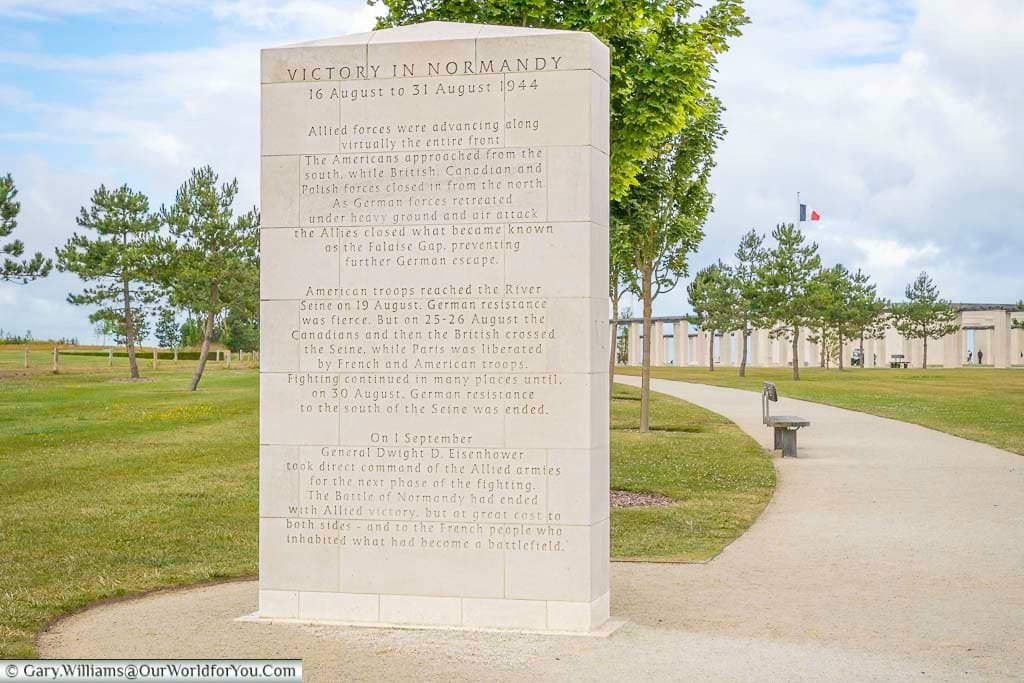
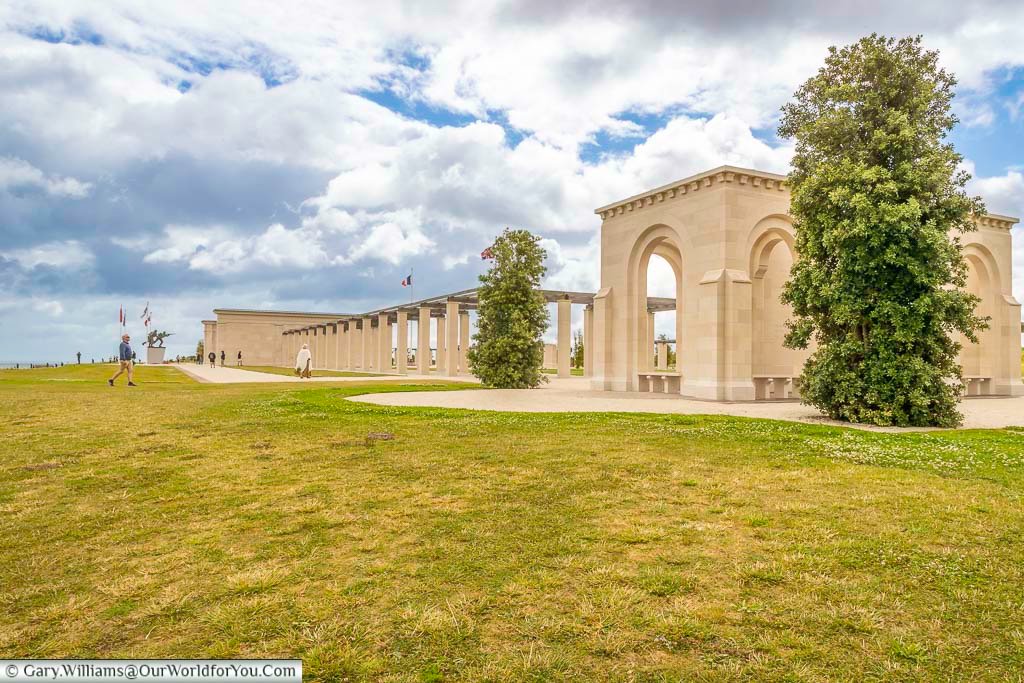
There is plenty of parking at the British Normandy Memorial and just a few Euros to park for the day, and all funds raised go directly towards the ongoing maintenance of the Memorial.
The British Normandy Memorial is incredible to see; it fills you with so much pride when you arrive. I’m sure, like me, you’ll feel a lump in your throat; it is so touching.
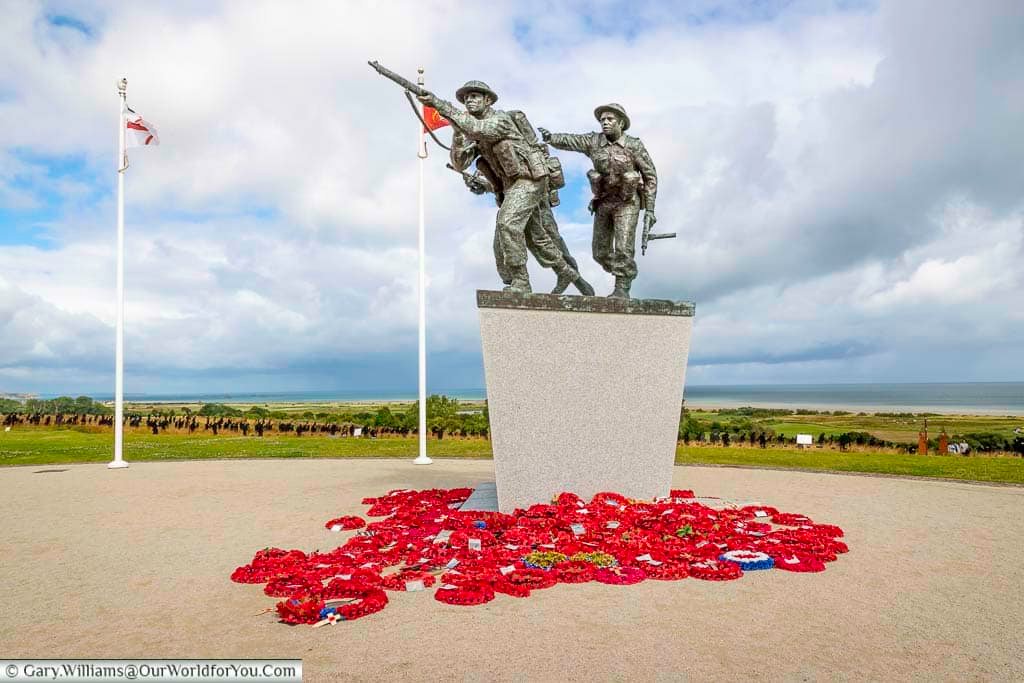
The seed of hope for the memorial began in July 2015 with Normandy War Veteran George Batts, who served with the Royal Engineers on D-Day. George mentioned that the United Kingdom, alone among the WWII Allied nations, did not have its own national memorial specifically dedicated to those who lost their lives on D-Day and during the Battle of Normandy and served under British command.
Just over a year later, in September 2016, the perfect site for the memorial was found just outside Ver-sur-Mer in France. The chosen location was then farmland, which had amazing unobstructed views overlooking “Gold Beach” and the English Channel.
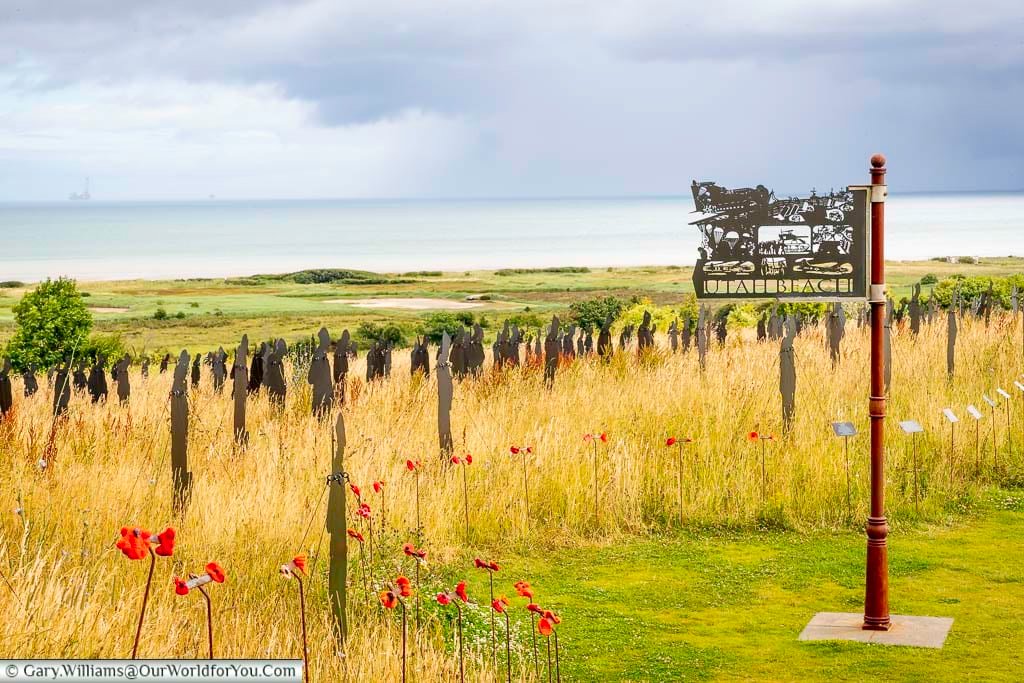
We made our little pilgrimage in 2024, the year of D-Day’s 80th anniversary on the 8th of May 2025, it will be the 80th Anniversary of VE Day.
The memorial is beautiful to stroll around and so poignant for the thousands who lost their lives during this awful battle. Commemorated here are the names of 22,442 unforgotten individuals who died while enduring the horrific scenes of the D-Day landings and the Battle of Normandy from the 6th of June to the 31st of August 1944.

One of the main reasons we wanted to visit the British Normandy Memorial in Ver-sur-Mer, France, was to witness the magnificent temporary installation of ‘Standing with Giants’. This remarkable installation of 1,475 silhouettes is named ‘For Your Tomorrow’ and reflects the number of servicemen who died on D-Day, 6th of June 1944, serving under British command.
The artwork left the British Normandy Memorial last Autumn to be moved to Stowe Gardens, National Trust site in Buckinghamshire; thankfully, the silhouettes have returned for 2025.
Ensure you follow the trail through the wild meadow fields and brush by the 1,475 ‘Standing with Giants’ figures. It was an incredibly moving experience I will never forget.
We love visiting France and each region so different from one another. I find the DK Eyewitness Guides really helpful in planning a trip and so often find interesting little snippets of info.
Take a peek at this revised Top 10 Pocket Travel Guide and see what you can discover.
Visit the town of Arromanches
Explore the Mulberry Harbour
Arromanches-les-Bains is a cute, picturesque town, although perhaps a little touristy. Nevertheless, we visited Arromanches to see the incredible Mulberry Harbour, installed in 1944 during World War II.
The Mulberry Harbour is an artificial landing port; today, you can touch sections of it that have washed up onto the beach.


It was an incredible feat of engineering in 1944, and during the 100 days of operation “Port Winston” landed 2,500,000 men, 500,000 vehicles, and 4 million tons of military materiel.
Luckily for us, the day we headed to Arromanches, the tide was out, and we could wander down onto the beach and see the corroded and seaweed-covered structure for ourselves.
Normandy Tourist Information
The charming harbour of Port-en-Bessin
Time for an alfresco lunch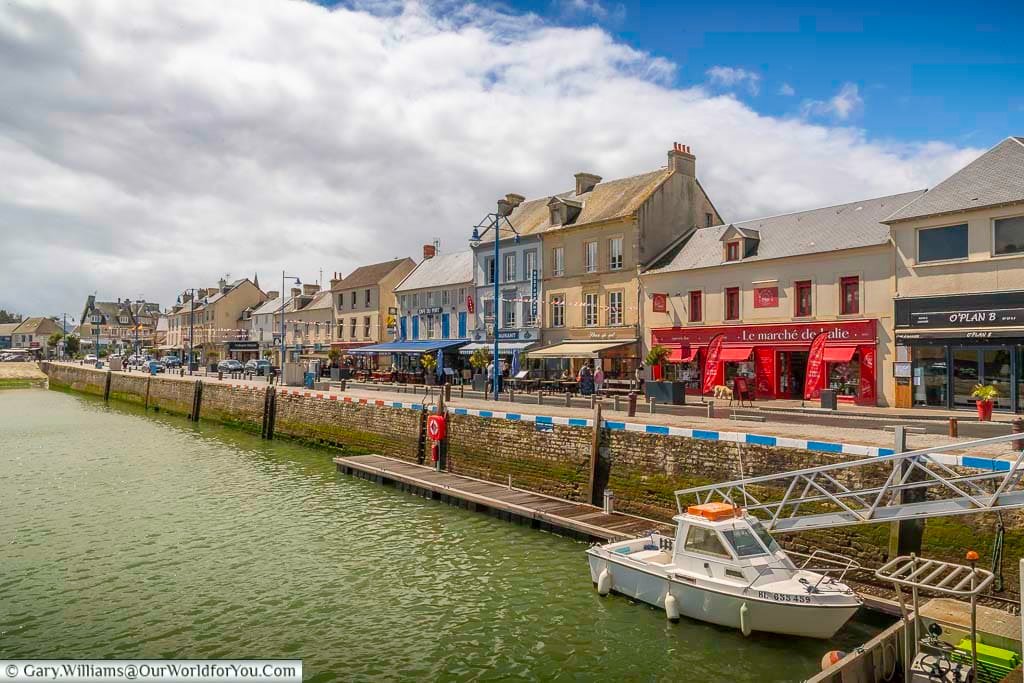
Port-en-Bessin is a really charming harbour town and had a lovely down to earth nautical feel about it. We parked up in the local car park and we easily managed to put our EV on charge.
The streets around Port-en-Bessin are a delight to stroll around and were reasonably quiet and peaceful, they had true character about them. I’m always drawn to water, it’s like a magnet to me, so I adored meandering around the working harbour watching the trawlers and strolling along the harbour arm and sea front.



Visiting Omaha Beach
Two touching memorialsOur final destination on this mini-road trip from Bayeux is the touching memorials on Omaha Beach. As I mentioned, we have previously visited the Normandy American Cemetery, which is located high above Omaha Beach and is incredibly heart-wrenching.
Thousands of white symmetrical crosses are lying before you, standing so proud and stretching as far as the eye can see. It is so peaceful; it takes your breath away at the sheer magnitude of the loss.

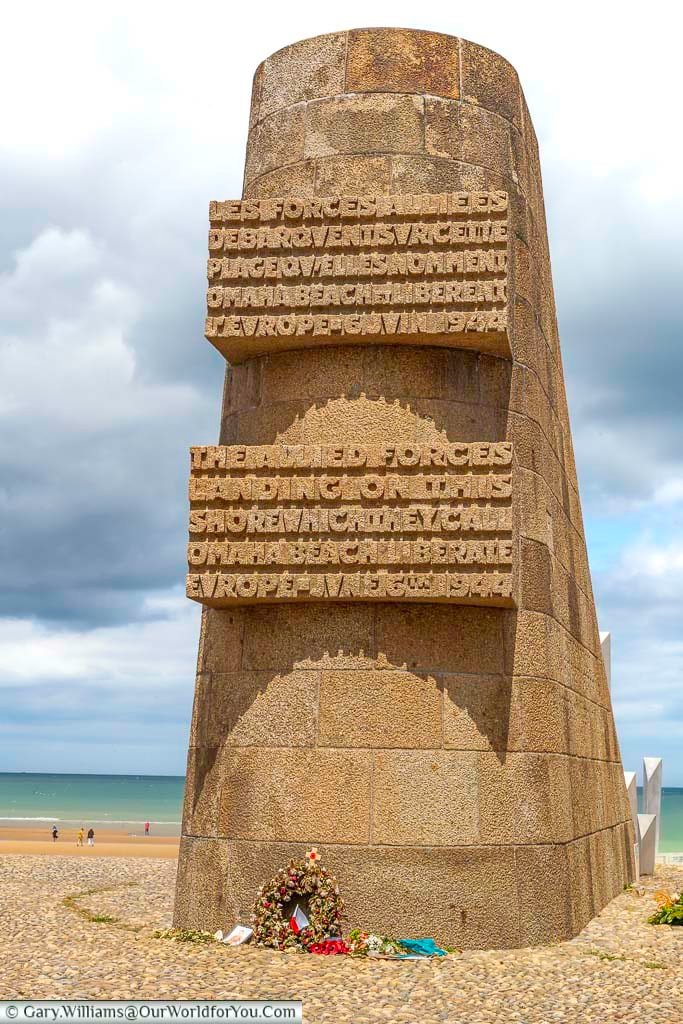
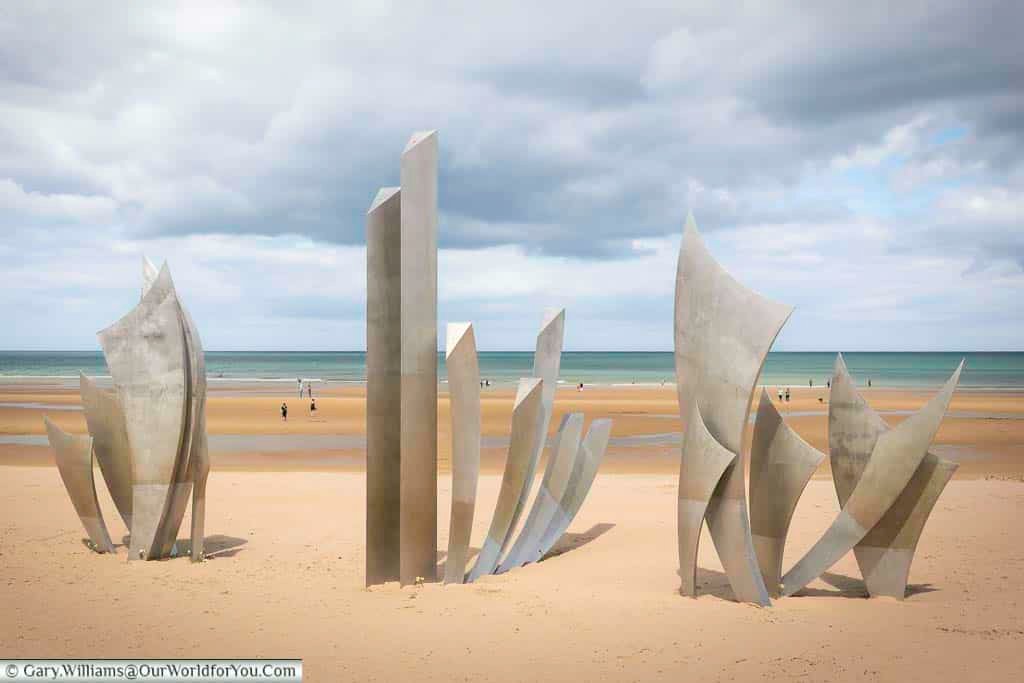
The second memorial on Omaha Beach is Les Braves Memorial, which was created in 2004 by the French sculptor Anilore Banon and is dedicated to the Allied troops who landed on this far-stretching beach.
The sculpture is magnificent and stands on the golden sandy shores of Normandy, a far cry from the horrors that befell here on 6th June 1944.
Les Braves has three elements, ‘The Wings of Hope’, ‘Rise, Freedom!’ and ‘The Wings of Fraternity’.
Visiting the sights in Bayeux
Following in historic footsteps
The Bayeux Cemetery is the largest British and Commonwealth cemetery in France with casualties from the Second World War. It contains 4,144 Commonwealth burials, 338 of them are unidentified.
Opposite the cemetery is the Bayeux Memorial, which bears the names of more than 1,800 men of the Commonwealth land forces who died in the early stages of the campaign and have no known grave.


While you’re in Bayeux, you must go and observe the Bayeux Tapestry for yourself, firstly, as it is a stunning slice of our history and magnificent to see. Secondly, you are not permitted to take photos of the tapestry. So, you’ll want to see it firsthand.
Also, ensure you visit Bayeux Cathedral along Rue des Cuisiniers in the city's medieval heart. If you’re fortunate enough to be visiting Bayeux between mid-July and the end of August, the magnificent cathedral is illuminated each evening.
Crit'Air vignette required for driving in France
If you’re heading to France from the UK with your own vehicle, you’ll need a Crit’Air ‘clean air’ car sticker.
Just like our low-emission zones in the UK, France now legally requires the display of a Crit’Air vignette. The good news is, these stickers are readily available and affordable online through the official French government website.
The Crit’Air sticker lasts the lifetime of the vehicle, so it’s a one-off purchase. The RAC website offers an in-depth guide to everything you need to know and your requirements.
Why not check out more on Normandy

Our itinerary for a Normandy road-trip via Rouen, Caen & Alençon
An idyllic 10-night journey

Roadtrippin’ memories of Normandy, France
History, cider, crepes & art, what more could you want?

Visiting Le Mont-Saint-Michel, Normandy, France
Don’t get caught by the tide…
* This post may contain links to affiliated sites where we earn a small commission at no additional charge to you.




